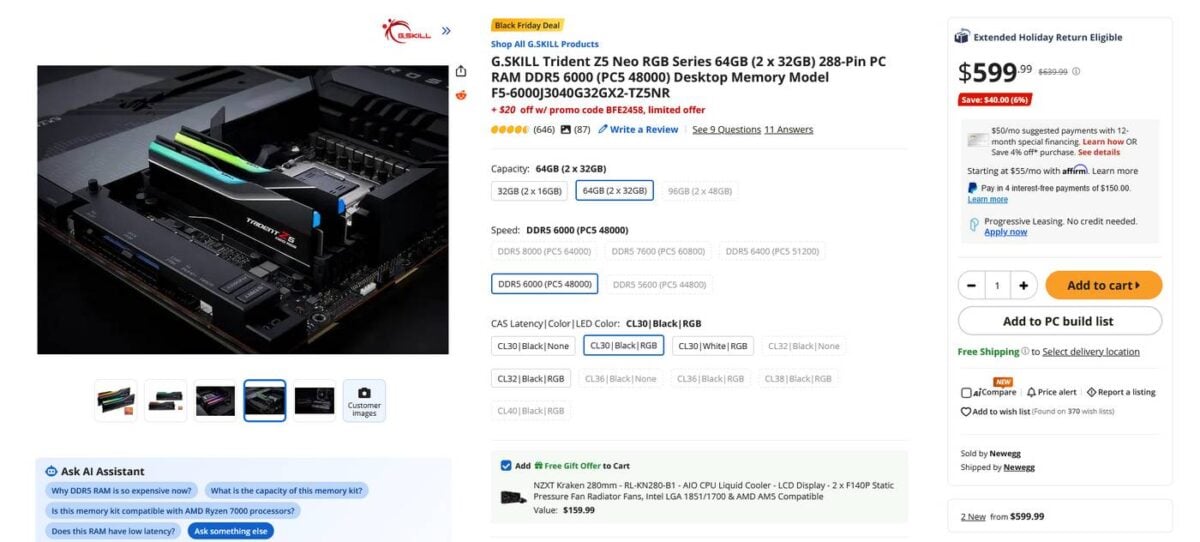Due to the ongoing AI boom, memory demand is at an all-time high, forcing manufacturers to shift production toward high-margin server products. This has left the consumer segment starved for NAND and RAM products, especially DDR5, which has seen a triple, and sometimes quadruple, price increase. And we are not talking about some fancy enthusiast kits here; this inflation is touching even the sweet-spot 6,000MT/s packs that many desktop gamers aim for when building or upgrading their PCs.
To give you an idea of this insanity, a 64GB kit of G.Skill’s Trident Z5 Neo 6,000MT/s CL30 RAM is currently being listed at an eye-watering $599.99 on Newegg – including a, wait for it, 6% discount. At this price, you can get a gaming console, be it PlayStation 5 or Xbox Series X, and still have some change for a game. And if you prefer to stay on PC, there’s the AMD RX 9070 XT or an Nvidia RTX 5070, both of which retail around or below the $600 mark.
Even more shocking is the percentage and speed at which this increase has happened. This G.Skill kit was available regularly at around $205 to $220 just a few months’ ago. From late October to today, this kit surged by 190%. And it’s just the beginning; things can still worsen as DRAM prices aren’t expected to drop any time soon.

As you may have guessed, the situation isn’t exclusive to G.Skill or low-latency DDR5 memory. For instance, Crucial’s Pro DDR5-6000 CL40 64GB Kit jumped by around 240% (from $157 to $550) in just two months, while Patriot’s Viper Venom DDR5-6000 CL36 64GB kit now sits at $620, up from $166 two months ago, i.e. a 270% price increase. If you move further back, you can even find kits that have inflated by 300%.
Unfortunately, no kit is spared from this craze; even the previously affordable kits have doubled in price, so if you find a retailer still selling old/cheap inventory, you may want to jump on the occasion.

At this rate, those who plan to upgrade their machines or build a new one should focus on the GPU instead and make do with 16GB of memory to save as much as possible. Better yet, you can save more by opting for a single DIMM 16GB module, which is generally cheaper than 2x8GB kits. Yes, you may lose some performance in games that like memory bandwidth, but the impact should be less than opting for a slower GPU.
Experts estimate that the situation could last throughout 2026, until the main demand from AI datacentres is fulfilled or manufacturing capacity dials up. That said, memory-based products have this cyclical rhythm where prices go up and down every few years. In other words, things will return to normal eventually, but it will just take longer than usual due to this unprecedented datacentre demand.


